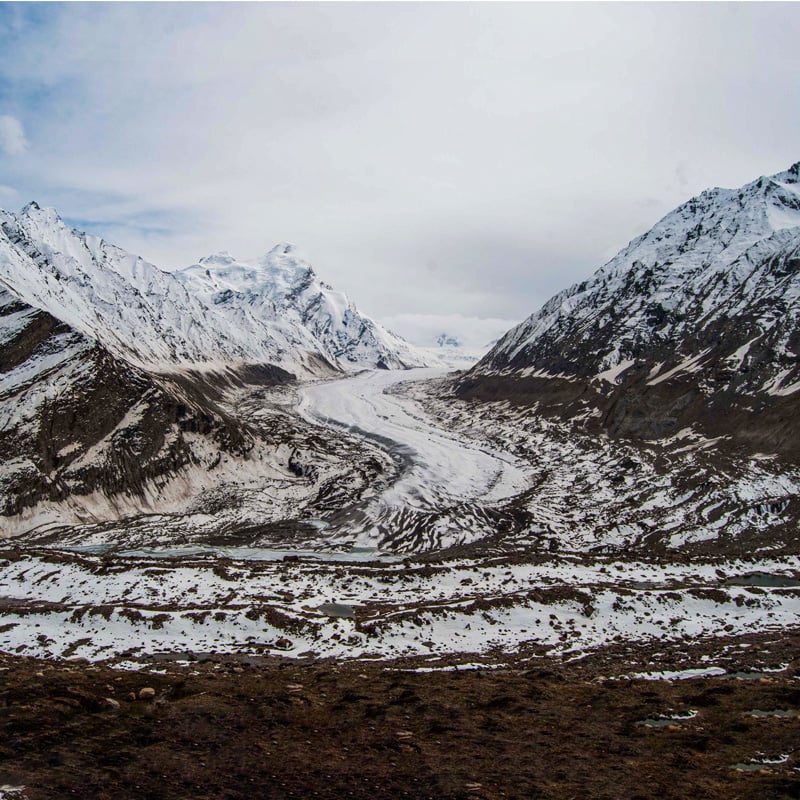
WATER & BEYOND
SURVIVING IN A DESERT OF ICE
The consequences of the melting of the glaciers are particularly evident in the Himalayan regions, where much of modern mountaineering history has been written. Among the highest peaks in the world, the survival of small local communities is seriously tested by the limited availability of water, which in certain periods of the year becomes a severe water crisis.
This is the experience of the Ladakhis, the 20,000 inhabitants of the cold desert of Zanskar (Ladakh), who despite problems linked to the climate crisis continue to struggle to avoid having to abandon their land and culture. A story of resilience documented by Angelica Pastorella, an anthropologist and researcher at the Ca’ Foscari University of Venice, who, supported by Karpos, is working to create awareness among mountain lovers and communicate the need to find solutions that will allow adaptation to the phenomenon of desertification.
It’s a problem that is not limited to the trans-Himalayan populations but that is destined to expand in the near future, involving the entire planet. It’s important to remember that in 2020, experts estimated that 25% of the world population, about 2 billion people, relied on water linked to 78 drainage basins originating from mountains or mountain ranges. The consequences of a desertification of mountain areas are immediately obvious.
One of the goals of Help the Mountains is to help protect the mountain communities that maintain the cultural and economic heritage of areas at high elevation. For us at Karpos, supporting this project also means contributing to the survival of populations that are in the same situation as the Ladakhis.
THE ZANSKAR VALLEY, WHERE EVERYTHING COMES FROM THE WATER
"Chhu Med” — without water. These words echo in the strong gusts of wind in the Zanskar Valley, a cold and arid desert located between 3,500 and 5,000 meters of elevation. Here the retreat of the glaciers has caused a situation of extreme drought, as evidenced by the consequences of the melting of the Drang Drung and Parkachik glaciers, which continues at an alarming rate.
The entire valley receives less than 100 mm of rain a year, and many communities have no drinking water available. Those who live on this land are forced to abandon agriculture and the raising of livestock. In giving up their primary means of support, the inhabitants of the region risk becoming climate refugees. While the recent tourism-based socioeconomic transformation of Ladakh offers an opportunity for growth for the region, it also risks aggravating the environmental situation and erasing the most interesting aspects of the culture.
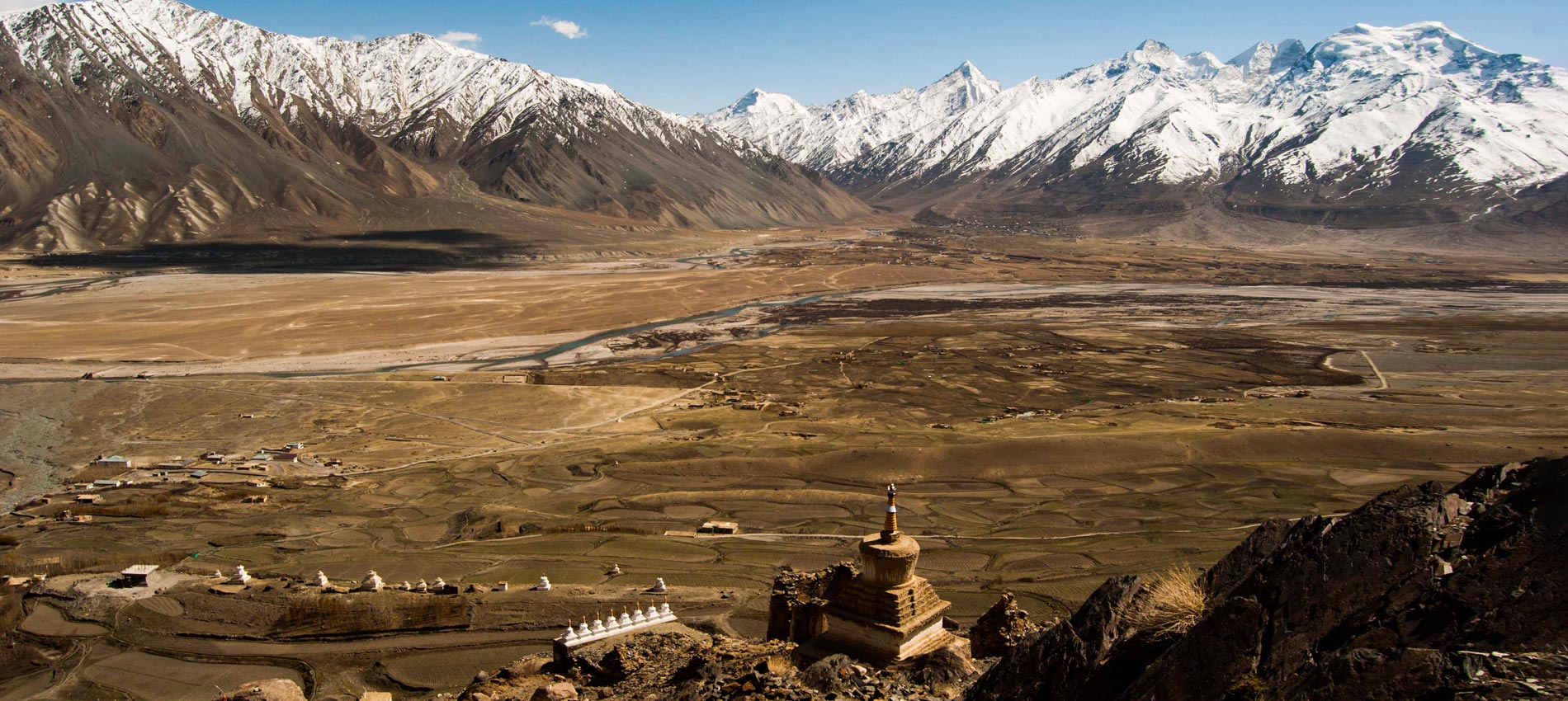
Ladakh is the cradle of the Buddhist religion, where man’s identification with the natural elements is particularly strong. For the Ladakhis, water is the origin of life forms and is the place to meet with the Lu, the divinities who, according to their belief, inhabit the springs and marshy areas. Specifically, the inhabitants of the region believe that the Lu could send them diseases and natural disasters if the waterways were to become polluted.
Religious and cultural factors explain the resilience of indigenous communities that are unwilling to leave the land of their ancestors and do not lose faith in a future rich with water.
The Ladakhi people’s culture seems distant from that of the West, but it teaches the importance of living in harmony with nature and therefore must be preserved.
“This heritage cannot be lost. Maybe we Westerners have lost this close link with nature, but here it’s still possible to maintain it. We can’t ignore the importance of the ‘Third Pole,’ the Himalayas. It’s the most important drainage basin in Asia. Water, life, originates in Ladakh. The Ladakhi culture, in which there is no separation between man and nature, is a source of inspiration for the whole world. The inhabitants of Ladakh are the first victims of the climate crisis, and we cannot abandon them!”
Angelica Pastorella – anthropologist and ethnographer
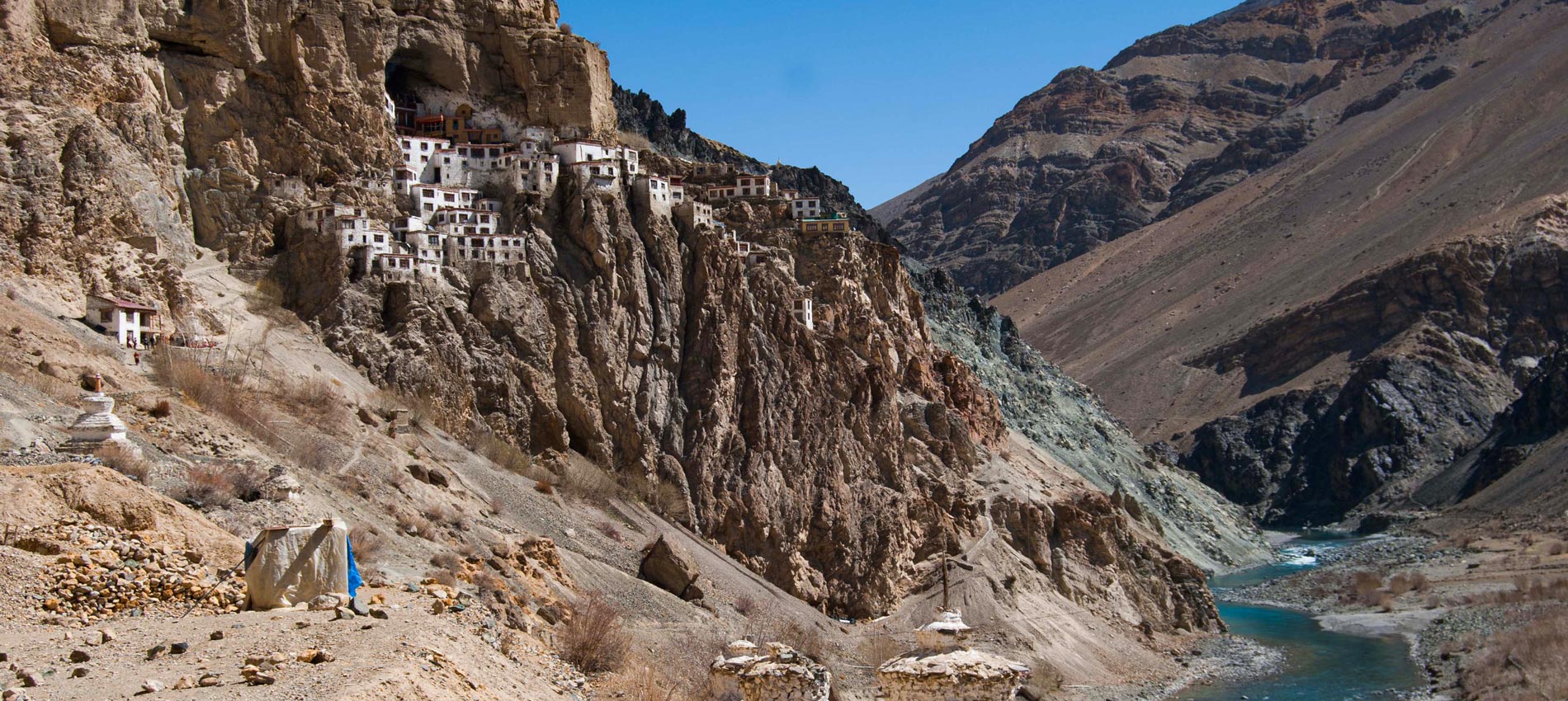
AN ICE WAREHOUSE AS A POTENTIAL SOLUTION
In Ladakh, winters are long and harsh, with temperatures that can reach -25 degrees Celsius. Summers, in contrast, are dry, with high temperatures of 20–25 degrees. So there’s a large seasonal temperature difference, which, in addition to accelerating the melting of the glaciers, makes it impossible to have water available in a consistent quantity. In fact, in May, as temperatures rise, the retreat of the ice causes an excess of water that often causes flooding and subsequently drought. For this reason, local peoples have worked hard to find a solution that allows them to maintain a reserve of water throughout the year, even in the hottest months.
As part of her research, Angelica documented the construction of artificial glaciers, real ice reserves for the summer season, analyzing the impact that these can have in countering the climate crisis in Ladakh. She documented three ingenious forms of storage. Historically, “ice cultivation” was the first technique to be introduced. Basically, the glacier water is conducted through pipes to a stone structure placed in a shady area. In this way, it is stored during the winter and released in the spring, when irrigation needs increase.
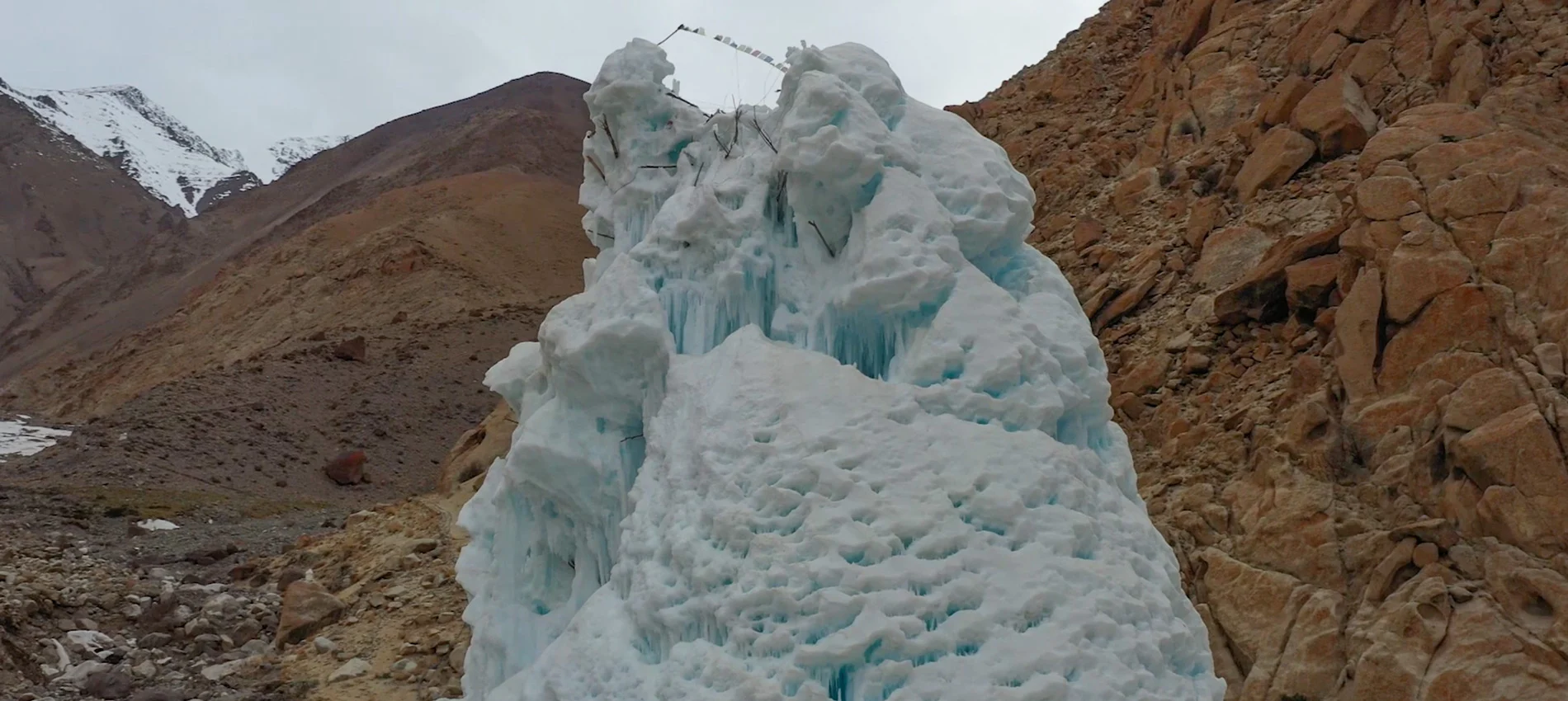
An alternative practice is the creation of “ice stupas”, where the frigid winter temperatures are exploited to create cone-shaped accumulations of ice. Ice stupas are constructed by conveying water downstream through pipes. The water is then sprayed via sprinklers and, because of the low temperatures, it freezes even before it touches the ground. Towers formed in this way are less exposed to the sun than natural horizontal glaciers and melt five times more slowly. A final solution, the most recent, is one patented by Navikarana, a clean energy and irrigation technology NGO. This method allows water to be transported from the river to various parts of the Zanskar Valley using solar energy.
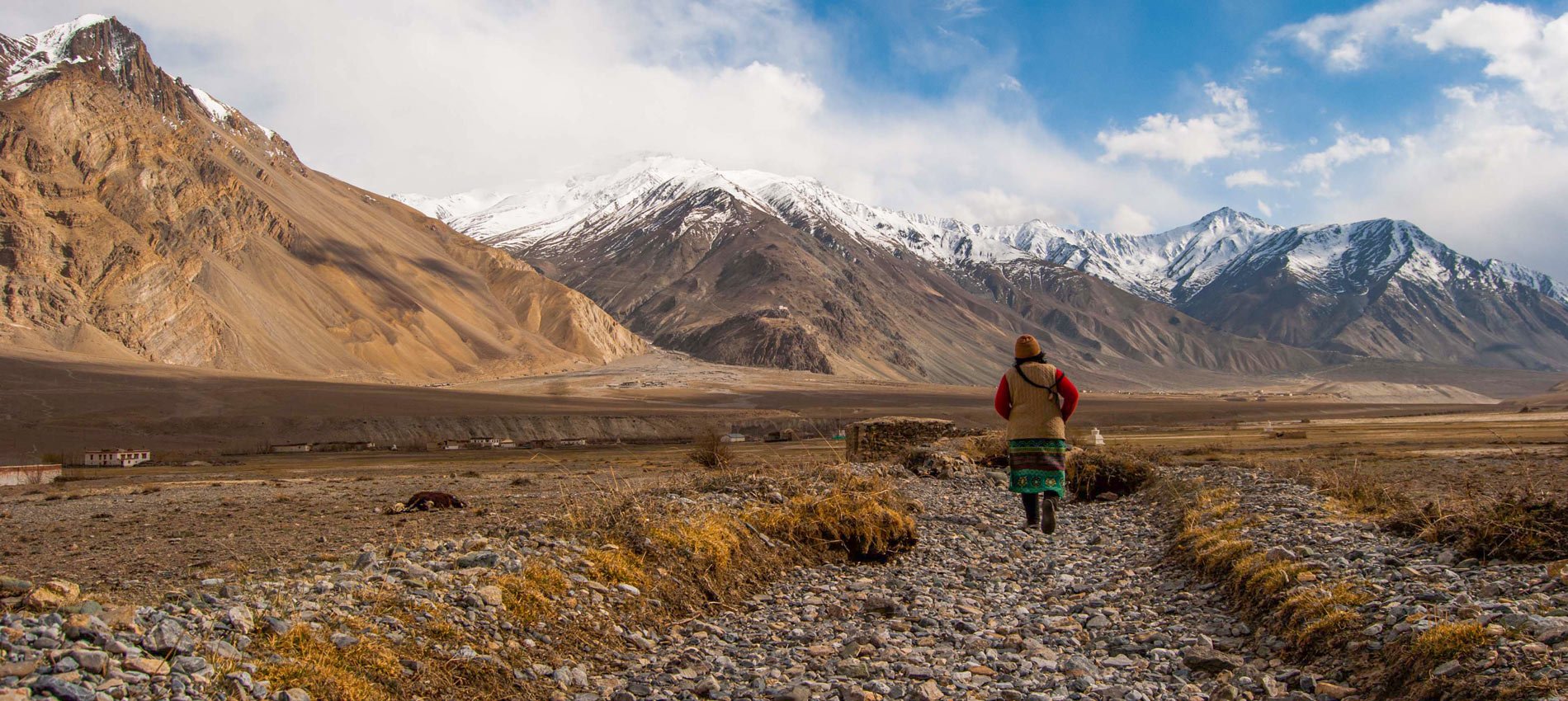
All these solutions can only be implemented in morphologically suitable environments and in the presence of a natural glacier from which the water originates, such as Ladakh. What seems immediately clear is that these are short-term solutions, useful for tackling a problem that in the last few years appears to have accelerated.
However, scientific research continues every day in search of new solutions and new adaptations to improve the living conditions of the Ladakh people and protect the last resilient residents of this beautiful land from having to give in to the effects of the climate crisis. The significant investments in research have resulted in innovative solutions and technologies that can potentially make a useful contribution to combatting the changes currently taking place.